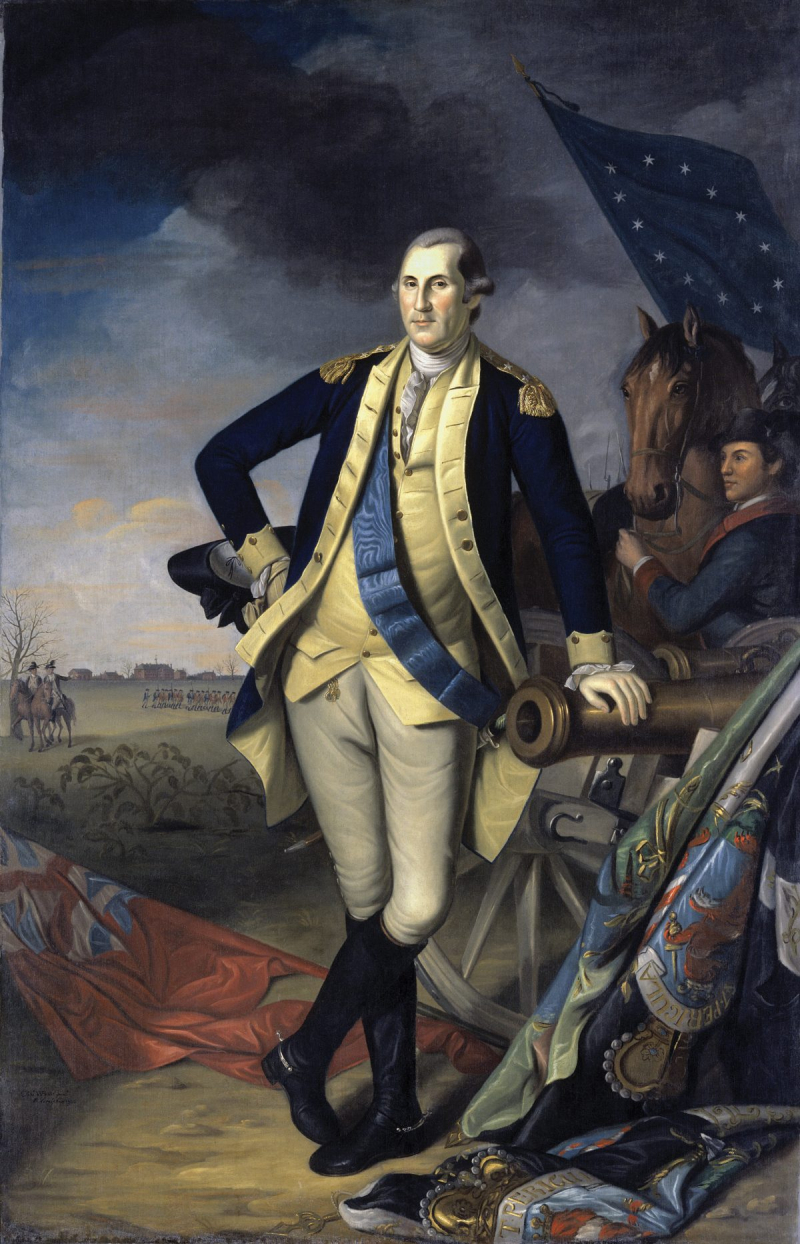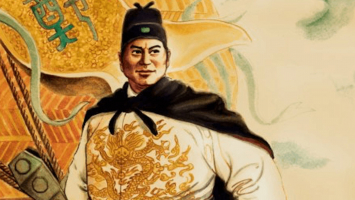Top 10 Facts About The French and Indian War
The French and Indian War is still an important but frequently overlooked chapter in American history. Here is a top of facts about the French and Indian War, ... read more...which is frequently cited as the catalyst for the American Revolution.
-
Instead of a conflict between the French and Indians, which had been raging since the late 1600s, this one was between French and British soldiers vying to rule North America.
Native Americans, however, had a significant impact. They participated in numerous engagements and formed alliances with both the French and the British. French armies initially had more success gaining their allegiance. Both nations had a mutually beneficial interest in trade, but the French were more receptive to Native American culture; they studied their languages and lived among them, occasionally getting married to and having children with Native women. The French also modified their military strategies, including guerrilla warfare in the woods and surprise assaults (including using camouflage).
Though initially neutral, the Iroquois Confederacy eventually sided with the British in 1758, while their longtime rivals, the Algonquins, supported the French. Native American communities were compelled to choose sides and determine how to best defend their territories because the English colonists did form alliances with particular tribes. In spite of the war’s moniker, not all Native Americans sided with the French.

History.com 
Knowitall.org -
Delegates from 7 of the 13 British colonies gathered at Albany, New York, weeks into the war to talk about the escalating danger and their combined defense.
Benjamin Franklin, a delegate from Pennsylvania, proposed a unified colonial government at the Albany Congress that would have comprised a legislative of delegates chosen by provincial assemblies and an administrative branch led by a president-general nominated by the British monarch.
Benjamin Franklin published a political cartoon showing the colonies as pieces of a dismembered, writhing snake in order to inspire the colonies to band together in the fight against the French. "Join, or perish," stated the caption. It was the first political cartoon in American history, appearing on May 9th, 1754 in his Pennsylvania Gazette. Prior to the American Revolution, the cartoon would gain popularity once more as colonists rallied to oppose British taxing measures.

The Society of the Cincinnati 
History.com -
The French pushed into what is now western Pennsylvania in the fall of 1753. George Washington, a youthful 21-year-old militia captain, was chosen by Virginia Governor Robert Dinwiddie to warn the French that they would have to leave or face the consequences since he believed this area to be colonial territory.
Fort Le Boeuf, which is located just south of Lake Erie, Washington was politely rejected by the French commander. Dinwiddie, incensed, gave Washington the rank of lieutenant colonel, and in the spring of 1754, he dispatched Washington and a group of troops to engage the French in a show of force. On May 28, early in the morning, Washington came into a small French reconnaissance party. After a shot was fired, 14 French soldiers—including their commander Joseph Coulon de Jumonville—were found dead within 15 minutes. He was killed, and the French were horrified and believed it was an assassination.
The fighting between the French and the British intensified after this. Many people believe that in this battle, George Washington struck the war’s first blow.

Encyclopedia Virginia 
Wikipedia -
Spain took the regretful choice to ally with France toward the conclusion of the war. They entered the fight in January 1762, but the British had already proven to be unbeatable.
The Spanish had started to settle in Florida in the 1500s, but the 1763 Treaty of Paris effectively ended France's dominion over North America. Despite gaining control of Louisiana, which the French had secretly given it in the Treaty of Fontainebleau the year before, Spain, which had allied with France in 1762, was compelled to hand over Florida to the British. As a result, the British gained Florida from Spain.
Thanks to the American Revolution, Spain would regain Florida 20 years later, but would soon lose it once more, permanently.

Florida Center for Instructional Technology 
floridahistory.org -
The French began to establish themselves in a region that was first known as Acadie, which was centered in Nova Scotia, in the early 1600s.
The British thought the Catholic inhabitants of French-speaking Acadia, which included portions of the modern Canadian provinces of Nova Scotia, New Brunswick, and Prince Edward Island, would be subversive despite their oath of neutrality. The French residents in that area were all expelled by the British after they routed the French in Nova Scotia in the summer of 1755. Around 14,000 Acadians were displaced and forced to leave their homes during "The Great Upheaval" or "Great Expulsion." Hundreds of refugees began to settle in French-controlled Louisiana in the 1760s after fleeing to the American colonies and France. The word "Acadian" changed into "Cajun" there, and those who call themselves Cajun today are descended from those who fled the French and Indian War.
.
In his poem Evangeline, A Tale of Acadie, Henry Wadsworth Longfellow commemorated the expulsion of the Acadians by telling the tale of a lady searching for her long-lost love, Gabriel.

History.com 
mentalfloss.com -
While learning new fighting techniques in the wilds of North America, the British and French also made an effort to treat one another with respect. The honors of war, or special treatment, were frequently given even if one side lost a fight. The defeated might be able to march out in surrender while waving their flags. Even the option of keeping their firearms is possible.
During the British assault on France's Fort Louisbourg in Nova Scotia in June 1758, there was a noteworthy instance of civility. During the battle, British Major General Jeffrey Amherst despatched a messenger with two pineapples for the wife of the French commander to the fort. A note apologizing for the mayhem the dispute must be making in her home was delivered with the fruit. Marie Anne de Drucour sent back five bottles of champagne as a token of thanks. Later, the French sent back homemade butter while the British sent more pineapples. Additionally, Commander Drucour offered any injured English officers the assistance of his French surgeons.
NC DNCR 
New England Historical Society -
Britain did not formally declare war on France until May 18, 1756, despite the fact that hostilities started in 1754. Three weeks later, France reciprocated. France realized they were waging a lost struggle after William Pitt's efforts in the colonies gave the British a new lease of life.
France wanted to hold peace talks with Britain in 1759. But at the moment, France renounced its attempts to negotiate because it found the British peace offers offensive. King Charles III of Spain, who was a distant relative of King Louis XV of France at the time, offered to support France in its battle in the colonies as long as the conflict did not conclude by May 1, 1762. King Louis XV agreed to Spanish participation in the hopes that Britain would perceive the two joined powers as a signal to submit. Although Spain's assistance helped the French, the British were not deterred and also declared war on Spain. Spain would ultimately show to be a weak force against the British.
The Treaty of Paris was ratified by the British Parliament on February 10, 1763, putting an end to a nine-year-long war between the two nations on the continent of North America.
Encyclopedia Britannica 
Kidadl -
Horace Walpole, an English playwright, famously wrote, "The volley fired by a young Virginian in the backwoods of America set the globe on fire." In fact, the 1754 fight initiated by George Washington ignited the Seven Years' War, a worldwide conflict that claimed hundreds of thousands of lives.
The Seven Years' War, which Winston Churchill referred to as "the first world war", saw battles fought in Europe, the Caribbean, the Philippines, India, and Africa. The French and Indian War is the name given to the conflict's North American phase. While Britain continued to fight France in North America, it relied on its ally Prussia, under the leadership of Frederick the Great, to continue the fight against France, Austria, Russia, and Sweden in Europe. During the French and Indian War, Native American tribes fought alongside colonial forces from Great Britain and France. They fought across North America over lands and expansion.
History.com 
Wikipedia -
The British were continuously losing land and forts to the French between 1755 and 1757. British morale suffered during this time due to ongoing defeats.
But just as things looked bleak, William Pitt was appointed British Secretary of State in 1757, reviving the British army. He took charge of the British soldiers in the colonies and contributed a sizable sum of money to the war effort. In an effort to divert French troops from the colonies, he also stepped up British efforts in Europe, a successful strategy. Pitt advised British forces to invade New France and seize control of various French outposts while the French forces were depleted in the colonies. These efforts allowed Great Britain to take back control of the colonies and eventually win the war. So, William Pitt "The Elder" played a pivotal role, which is one of the facts about the French and Indian war.

Wikipedia 
Wikipedia -
A rift between Great Britain and its British colonists was largely a result of the French and Indian War and its repercussions. The colonists were furious because they were now prohibited from settling in the western region after Great Britain gave Native Americans authority of the region, producing a gap between the colonists and their mother country.
Furthermore, because of the war's enormous debt, Great Britain had to impose exorbitant taxes on the colonies in order to make up for its financial losses. England imposed a number of taxes on the colonies in an effort to pay off its enormous debt. The subsequent taxes, like the Stamp Act, Tea Act, and others, incited resentment among the colonists. There was a protest against "no taxation without representation" as a result of the colonists' lack of representation in the British Parliament. King George III's Royal Proclamation of 1763, which was intended to stop violence between settlers and Native Americans, further inflamed colonists' resentment. Many colonists perceived this as additional Crown control. These factors, which directly stemmed from the French and Indian War, led to the American Revolution.
Grunge 
American Battlefield Trust































